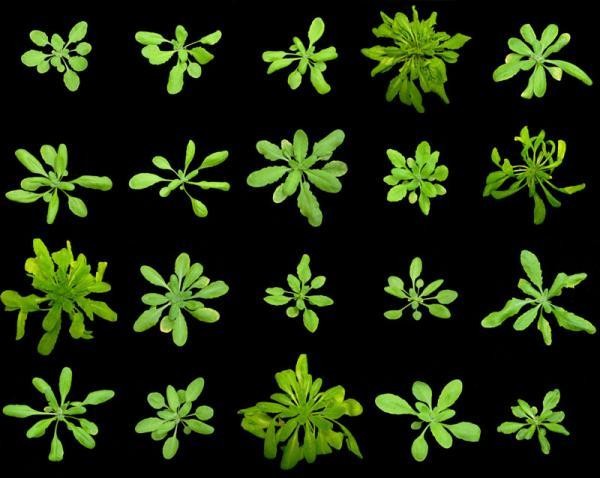中科院揭示拟南芥蛋白精氨酸甲基转移酶SKB1调控铁离子吸收机制
中科院遗传与发育生物学研究所凌宏清和鲍时来研究组共同合作在一项以拟南芥为研究对象实验揭示,拟南芥蛋白精氨酸甲基转移酶SKB1调控铁离子吸收机制。相关文章发表于2013年11月8日的《The Plant Journal》杂志上。

中科院揭示拟南芥蛋白精氨酸甲基转移酶SKB1调控铁离子吸收机制
凌宏清研究组的樊华杰博士和鲍时来组的张昭亮博士为论文的共同第一作者。
蛋白精氨酸甲基转移酶在转录调控、rna加工、DNA修复和信号转导等重要生物学过程中发挥着重要作用。
研究人员在新研究中发现,拟南芥蛋白精氨酸甲基转移酶SKB1可根据细胞内铁离子含量的多少,动态结合到控制铁离子吸收的转录调控基因bHLH38、bHLH39、bHLH100和bHLH101的启动子区,对组蛋白进行对称性双甲基化(H4R3sme2)修饰,调控这四个铁吸收转录因子的表达强度,进而控制铁离子的吸收,避免过多铁吸入对细胞的伤害。该研究发现了植物调控铁离子吸收的新机制。
该研究得到了科技部“973”项目、农业部转基因专项和国家自然科学基金的资助。
原文摘要:
The Arabidopsis Eukaryotic Translation Initiation Factor eIF5A-2 Regulates Root Protoxylem Development by Modulating Cytokinin Signaling
Bo Ren,Qingguo Chen,Sulei Hong,Wenming Zhao,Jian Feng,Haizhong Feng and Jianru Zuo
The phytohormone cytokinin regulates various aspects of plant growth and development, including root vascular development. In Arabidopsis thaliana, mutations in the cytokinin signaling components cause misspecification of protoxylem cell files. Auxin antagonizes cytokinin-regulated root protoxylem differentiation by inducing expression of ARABIDOPSIS PHOSPHOTRANSFER PROTEIN6 (AHP6), a negative regulator of cytokinin signaling. However, the molecular mechanism of cytokinin-regulated protoxylem differentiation is not fully understood. Here, we show that a mutation in Arabidopsis FUMONISIN B1-RESISTANT12 (FBR12), which encodes a eukaryotic translation initiation factor 5A, causes defective protoxylem development and reduced sensitivity to cytokinin. FBR12 genetically interacts with the cytokinin receptor CYTOKININ RESPONSE1 (CRE1) and downstream AHP genes, as double mutants show enhanced phenotypes. FBR12 forms a protein complex with CRE1 and AHP1, and cytokinin regulates formation of this protein complex. Intriguingly, ahp6 partially suppresses the fbr12 mutant phenotype, and the fbr12 mutation causes increased expression of AHP6, indicating that FBR12 negatively regulates AHP6. Consistent with this, ectopic expression of FBR12 in the CRE1-expressing domain partially rescues defective protoxylem development in fbr12, and overexpression of AHP6 causes an fbr12-like phenotype. These results define a regulatory role of the highly conserved FBR12 in cytokinin-mediated root protoxylem specification.

